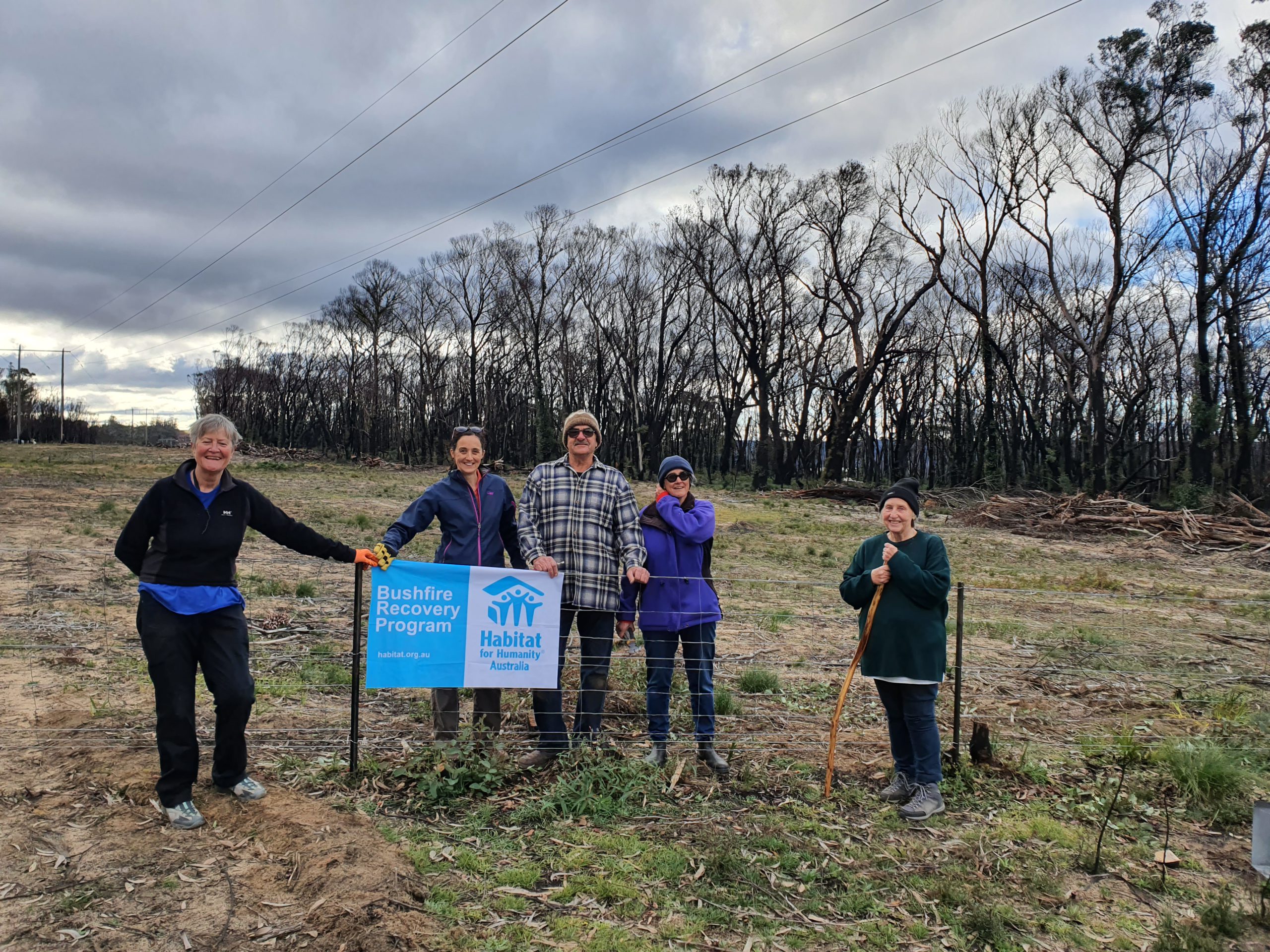Dierdre is leaning slightly on her walking stick, warm coat and bobble hat a shield against the sunny but still mountain-cold afternoon. “Beautiful,” she says appreciatively as she looks at the shiny new wire mesh boundary fence just being given its finishing touches by two Habitat for Humanity Australia volunteers who have worked on it all day. “Haven’t they done a beautiful job.”
Dierdre and her husband Dennis moved into their single storey house in the Blue Mountains community of Bell as newly-weds, awed by the spectacular scenery. Almost 53 years later, on December 21, 2019, both then in their mid-70s, they stood together, successfully defending it from a ferocious bushfire that left vast swathes of land in the region, devastated.
“Things like this,” she says, looking at the fence stretching off into the distance, “this makes a really big difference to us.”
The couple, like thousands of others in the Blue Mountains area of NSW, had been keeping track of the fire for weeks. “At one stage they called us, and they said everything’s all clear it’s going towards Katoomba,” says Dierdre. “Later, we were down at the fire station getting information and all of a sudden it came over the radio: ‘It’s coming’. Dennis said to me ‘You’d better stay down here at the fire station because it’s safer’. And I said, ‘I’m not staying here along with 60,000 litres of diesel’ and he said ‘righto’. And we came back to the house.”
As the flames roared towards them, Dierdre stood with a hose on one side of the house, Dennis with a hose on the other side. In the end the fire didn’t touch their home. “Dennis being in the Navy, that’s what saved us,” she says. “We’ve got sprinklers on the roof, we had sprinklers there and there and there,” she points out a necklace of sprinkler points surrounding the house and right around the water supply system from their bore.
For the next few days all three of the access roads to the area remained closed and the whole community was marooned. “We all had our Christmas lunch at the fire station,” Dierdre says. “The whole community. The fire engines brought in food for us because a lot of people hadn’t bought stuff for Christmas yet. Though we did have enough alcohol.” And she laughs.
The garden at the front of the house was undamaged. The flowering shrubs and plants like the spaghetti squash Dennis was growing for one of his daughters, remained completely untouched. At the back, with its glorious sweeping view of the valley, it still looks like an angry giant has thrown a hissy fit, charred carcases of giant trees strewn where the SES came in and felled the most dangerous ones. Many others, blackened but so far still standing, cast long shadows on the large clearing.
Dennis who had spent a lifetime in the Royal Australian Navy, is suffering from debilitating back trouble and is currently “banned’’ by Dierdre from doing anything, particularly hard lifting. “His back’s been really playing up; he spent the night of the fire walking around, putting out all the embers that kept coming. That, and all the extra bits he’s had to do since the trees were dropped. He just did too much,” she says.
The couple’s two daughters and three grandchildren live in Wyong and Sydney. They all keep in regular contact. But Dennis and Dierdre, who’ve already endured so much, are like many Australians, particularly older people, worried about the ongoing about the COVID-19 pandemic.
“When we were fighting the fire, we didn’t really have time to be frightened. You’ve just to get in and get on with it and do what you had to do. But this Coronavirus … one of our neighbours is really terrified.”
Other work done by the Habitat volunteers during the day, included the clearing and carefully-controlled burning of the huge mounds of smaller branches and foliage, plus the chopping and creation of a long wall of readily available logs for the interior household fires.
The volunteer team were part of Habitat for Humanity NSW’s Bushfire Recovery Assistance Programme operating across the Blue Mountains region. Based on community assessments to date, the program will involve 1 to 3 full-day activities each week for the next few months, potentially more if additional funding becomes available




